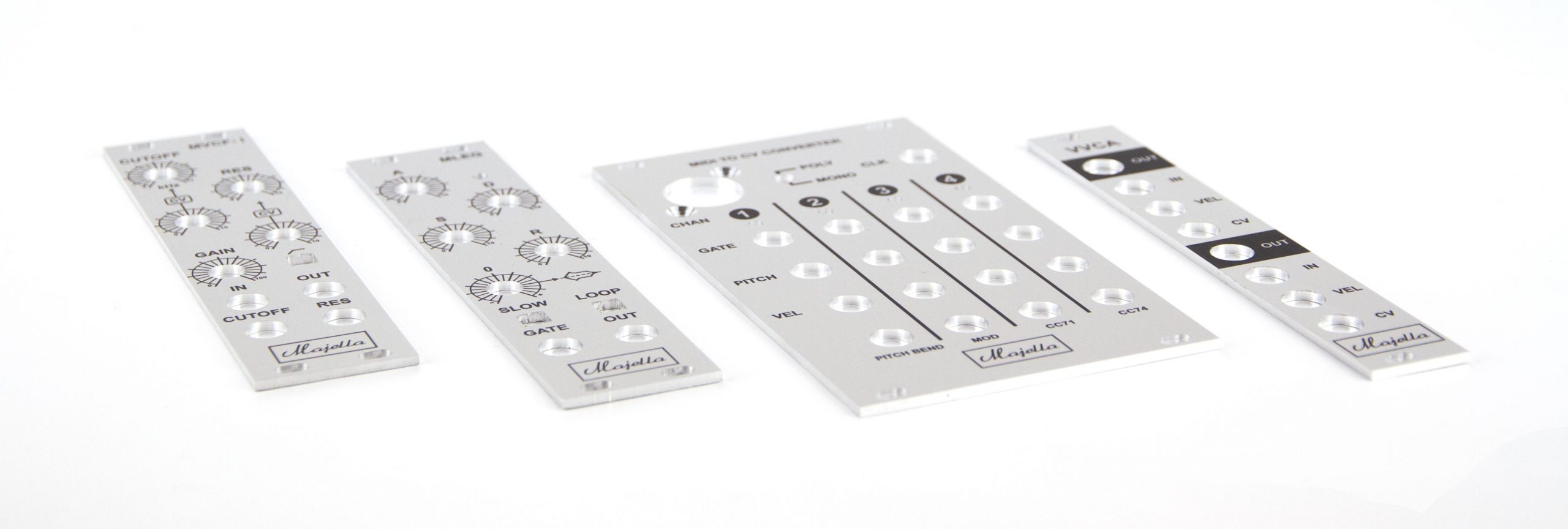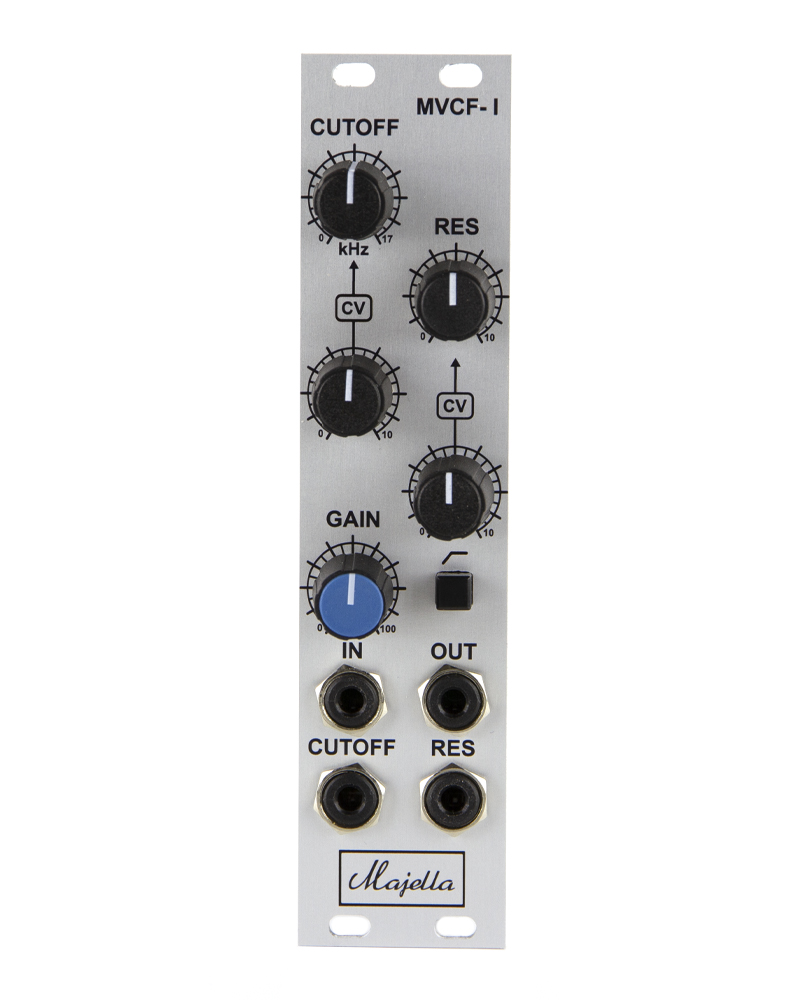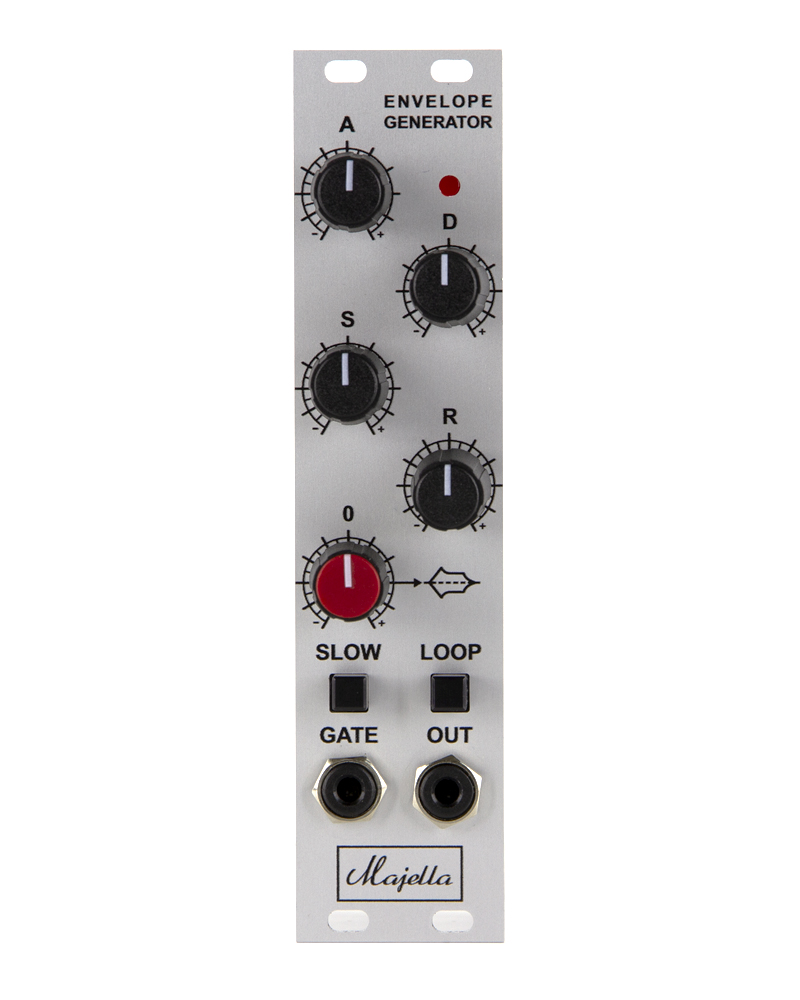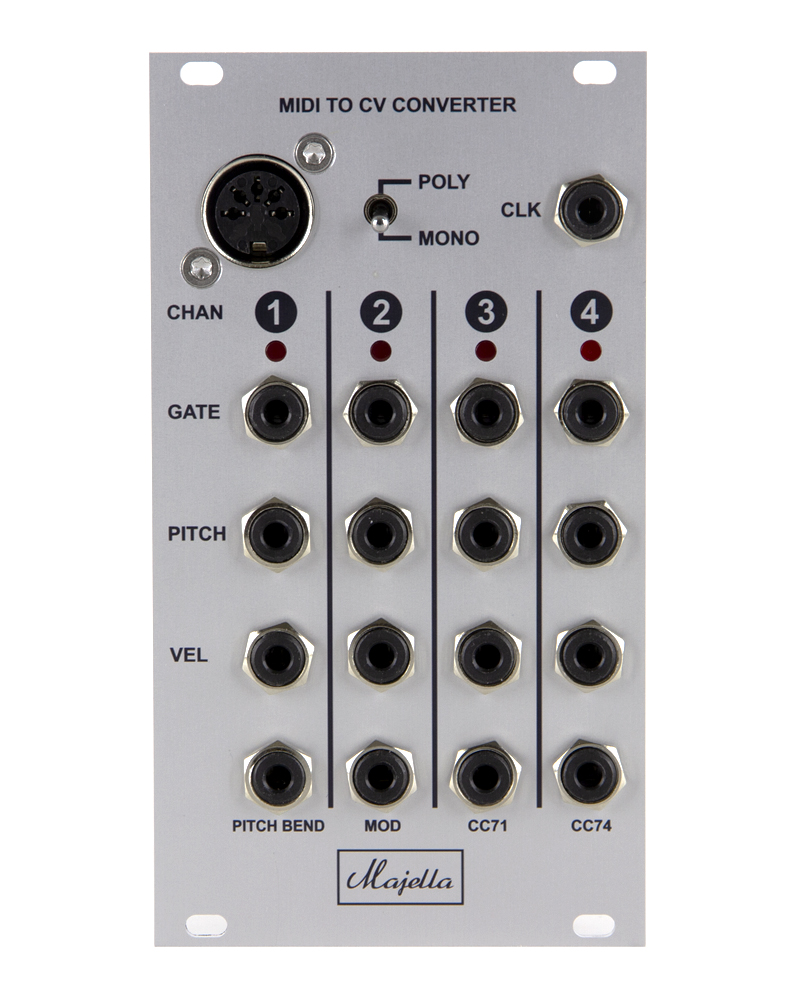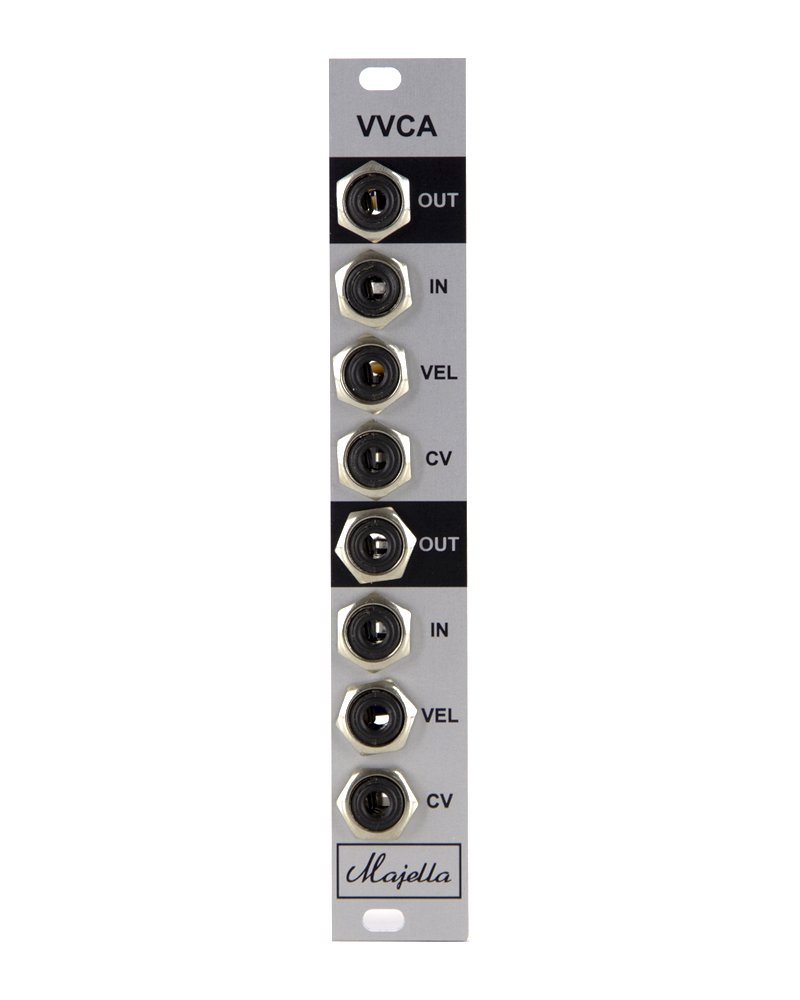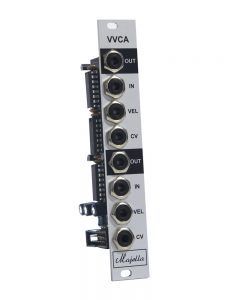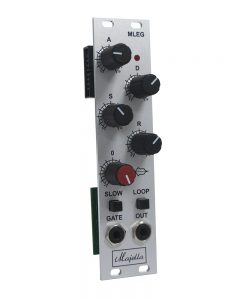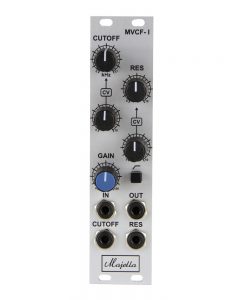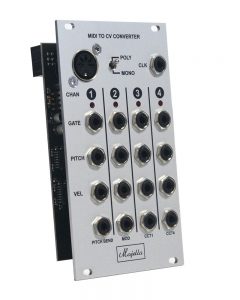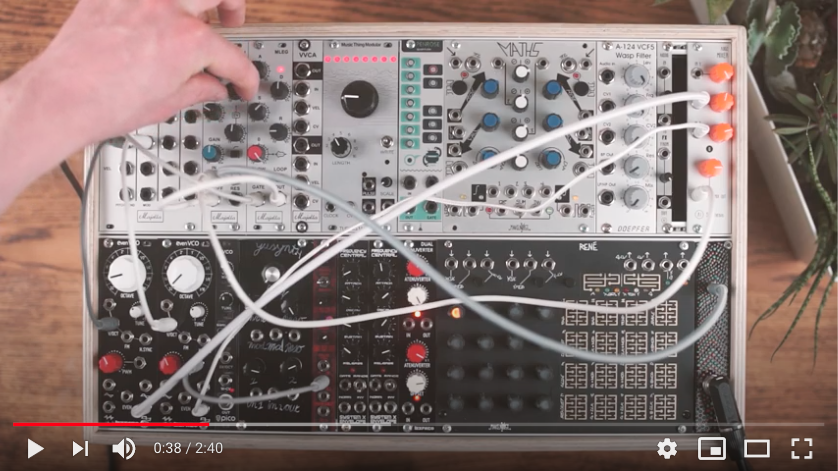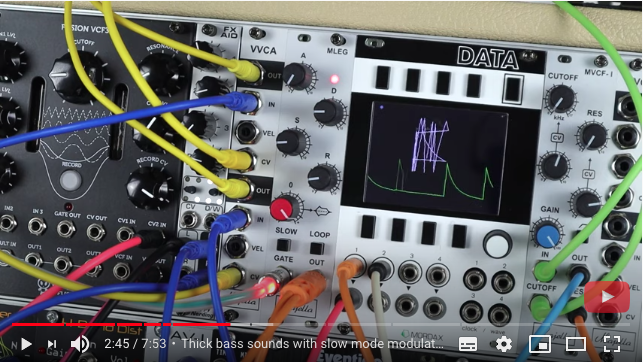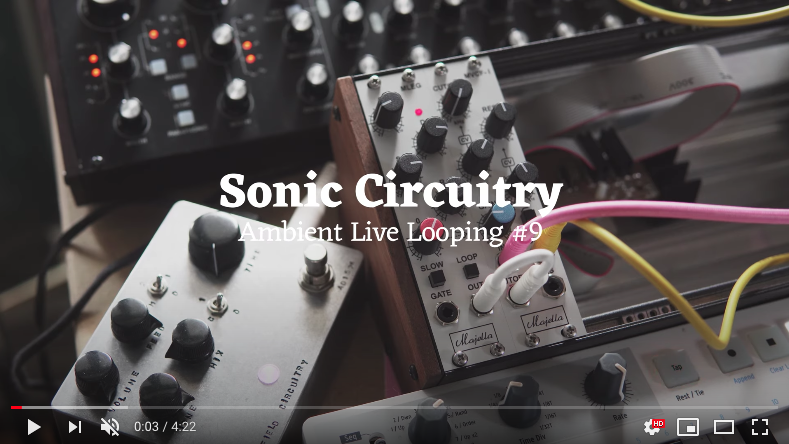Eurorack
Simplistic with extra’s
From the first look Majella Audio modules look quite basic, but if you look more carefully they are not. The philosophy behind Majella Audio Eurorack modules is simplicity, yet highly functional and high quality.
A VCA with velocity voltage controlling the CV amount, A looping envelope with amount and polarization control over the output…. These are simple additions which make the highly functional and usable.
Majella Audio modules
Velocity VCA
The Majella Audio VVCA is a dual voltage controlled amplifier (4 HP) with an additional input for Velocity CV. This input allows you to control the CV amount through another internal VCA.
This adds a lot of expression possibilities like velocity and adding accents on certain notes in a sequence. You can also use the VCA for control voltages and have velocity control the depth of for example LFO/VCO modulation.
When there is no velocity is patched in, the VVCA acts just like a normal VCA.
Envelope / LFO
The Majella Audio MLEG is an analog ADSR envelope generator. This snappy analog envelope has a polarizer on the output so that you can manually set the modulation amount and polarization. This is extremely useful for VCF cutoff modulation, for example in hi-pass mode, but also for pitch modulation and more!
The MLEG also has a “slow” mode for extremely slow envelope curves.
The envelope can be used as LFO by pressing “loop”. The frequency can be set by tweaking the Attack and Decay time knobs. Because the Attack and Decay can be set so fast it can even go into audio rate modulation.
When a cable is inserted to the gate input and the envelope is in “loop” mode, the looping envelope will be triggered when gate is high.
The MLEG is not just another envelope!
Voltage Controlled Filter
The Majella Audio MVCF-I is a 12dB/octave hi-pass/lowlpass voltage controlled filter (6HP). The MVCF-I has a unique analog signal path with control over input volume/gain that can be pushed into analog clipping/overdrive. Also the MVCF-I has voltage controlled resonance for accents and extra expression possibilities. For the cutoff and resonance CV inputs there are dedicated amount knobs, placed in a way you can still fit your fingers between de knobs to tweak them!
The widely applicable sound of the MVCF-I
The MVCF-I is a widely applicable VCF, that can be used for thick analog bass lines when the input mixer is set to overdrive the sound a bit. The filter can also sound very clear, so you can use it for, let’s say, ambient melodies.
In this video Sonic Circuitry shows the pure side of this VCF and takes you on a beautiful ambient journey using the MVCF-I, controlled by the MLEG.
MIDI to CV
The Majella Audio MCVC is a 4 voice MIDI to CV converter for Eurorack. For each voice there is a Pitch, Gate and velocity output. Besides that the MCVC has clock (24 ppqn) 2x CC, pitch bend and modulation CV outputs.
There is a MONO mode which allows you to control 1 up to 4 individual channels at the same time. The POLY mode allows you to play 4 voice polyphonic.
DIY modules
As synth DIY enthusiasts ourselves, we love to contribute to the synth DIY community. You can build your own MIDI to CV converter or Velocity VCA, with the help of a very detailed build document or you can watch Synth DIY Guy showing you how to do it!
Do It Yourself!
High Quality front panels
We use high quality aluminium and a special printing technique to ensure that Majella Audio front panels are sustainable. Due to an extra step in the anodization process the graphics are solvent and scratch resistant. They won’t wear out over the years!
In this GIF you can see a rejected frontpanel vs. the frontpanel we actually use. The extra step within the manufacturing process is very visible, especially over time!

